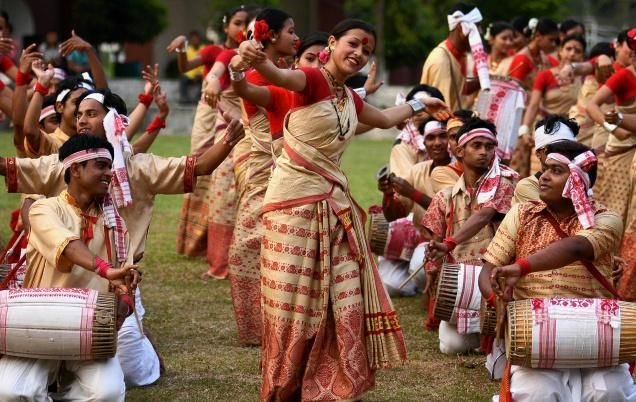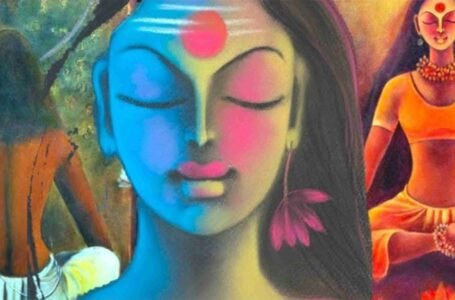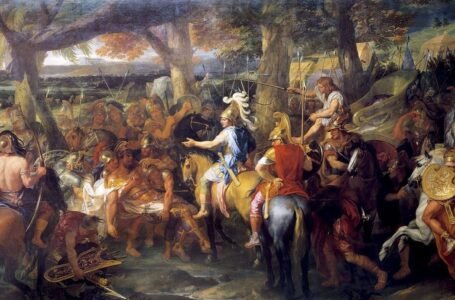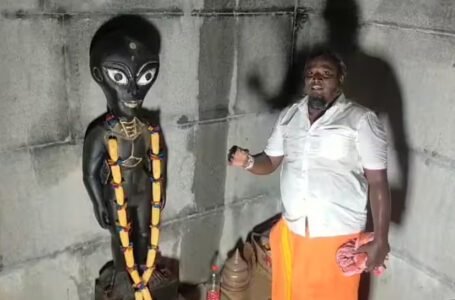The Bihu Dance: A Symbol of Assamese Culture and Identity

The Bihu dance, a vibrant and energetic folk dance from Assam, India, stands as a significant cultural emblem representing the Assamese community’s traditions and celebrations. Rooted deeply in the essence of the Bihu festival, this dance form encapsulates the joy, vigor, and spirit of Assamese culture. Its origins can be traced to ancient fertility rites, and over the centuries, it has evolved into a celebrated performance showcasing the Assamese people’s unity, heritage, and connection with nature. Despite its transformation and occasional commercialization, the Bihu dance retains its traditional essence, continuing to enchant audiences with its rhythmic beauty.
Origins and Historical Background
The Bihu dance has its roots in the ancient traditions of the ethnic communities of Assam, including the Deoris, Sonowal Kacharis, Morans, Chutias, Boros, Rabhas, and Borahis. Scholars believe that the dance originated as a fertility ritual aimed at invoking prosperity for both people and the land. Traditionally, it was performed in open spaces, such as fields, forests, groves, and riverbanks, particularly under fig trees, which are considered sacred in many cultures.
Historical references to Bihu are found as early as the 14th century, during the reign of Chutia King Lakshminaryan, where the festival and its associated dances were mentioned in inscriptions. Over time, the dance transitioned from being a communal ritual to a structured cultural performance. Despite societal changes and colonial influences, the Bihu dance has retained its fundamental character, remaining an integral part of Assamese identity.
The Bihu Festival and Its Connection to the Dance
The Bihu dance is inextricably linked to the Bohag Bihu festival, also known as Rangali Bihu, which marks the Assamese New Year. Celebrated in mid-April, Bohag Bihu signifies the arrival of spring and the beginning of the agricultural season. The festival is characterized by merriment, feasting, and communal gatherings, with the Bihu dance serving as the centerpiece of the celebrations.
The dance embodies the themes of fertility and renewal, reflecting both human and agricultural fertility. Through its dynamic movements and rhythmic patterns, the dance captures the joy of life and the hope for a prosperous future. The use of musical instruments, such as the dhol (double-headed drum), pepa (hornpipe), and flutes, adds to the celebratory atmosphere, replicating the sounds of nature and invoking the blessings of rain and abundance.
Performance Style and Techniques
The Bihu dance is typically performed by groups of young men and women in colorful, traditional attire. The dancers’ costumes are predominantly red, symbolizing joy, energy, and vitality. Women wear the mekhela chador, a traditional Assamese garment, adorned with intricate designs, while men don dhotis and gamochas. The attire enhances the visual appeal of the dance, adding to its festive spirit.
The performance begins with the dancers entering the stage in a slow, synchronized manner. The men play musical instruments, creating a rhythmic foundation, while the women take their positions with hands placed on their hips, forming an inverted triangular shape. The dance gradually gains momentum, with the women swaying their bodies, bending slightly forward from the waist, and adopting graceful postures. The movements become more vigorous as the music intensifies, with the dancers displaying a blend of energy and elegance.
The Bihu dance’s choreography incorporates brisk steps, rapid hand movements, and dynamic body gestures. The dancers often form lines or circles, creating visually captivating patterns. In some variations, men and women face each other, holding hands or embracing each other’s waists, symbolizing unity and harmony. Advanced sequences may involve pairs of dancers performing in the center, showcasing intricate moves that mimic the rhythms of nature and life.
Symbolism and Cultural Significance
The Bihu dance is more than just an artistic expression; it is a celebration of life, fertility, and community. Its association with the Bohag Bihu festival underscores its role as a ritualistic and cultural activity that unites people across social and economic divides. The dance’s themes of love, courtship, and renewal reflect the Assamese people’s deep connection with nature and their agricultural roots.
Historically, the erotic undertones of the Bihu dance, symbolizing fertility and passion, faced criticism from conservative sections of society, particularly during the colonial era. Victorian values imposed by British colonists viewed the dance as inappropriate, leading to its marginalization. However, the resilience of Assamese culture ensured the survival of the Bihu dance, which eventually gained recognition as a symbol of regional pride and identity.
Modern Transformations and Commercialization
In contemporary times, the Bihu dance has undergone significant transformations, adapting to the changing cultural landscape. While it remains a cherished tradition, the dance has also become a popular form of entertainment, performed on stages and in cultural festivals across India and beyond. The first staged performance of the Bihu dance took place in 1962 in Guwahati, marking its transition from a communal activity to a formal cultural event.
However, the commercialization of the Bihu dance has led to concerns about the loss of its traditional nuances. Modern performances often emphasize visual spectacle over cultural authenticity, incorporating stylized choreography and elaborate costumes that deviate from traditional practices. Despite these changes, efforts are being made to preserve the dance’s original essence and promote its cultural significance.
Guinness World Record and Global Recognition
The Bihu dance achieved international recognition on April 14, 2023, when Assam set a Guinness World Record for the largest Bihu performance at a single venue. Held at the Indira Gandhi Athletic Stadium in Guwahati, the event featured 11,000 Bihu dancers and drummers, showcasing the dance’s enduring popularity and cultural importance. This achievement highlighted Assam’s commitment to preserving its heritage while promoting the Bihu dance on a global stage.
Preservation and Revival Efforts
Recognizing the importance of the Bihu dance as a cultural heritage, various organizations and individuals have undertaken initiatives to preserve and promote it. Local communities, cultural groups, and the government of Assam have played a pivotal role in organizing workshops, festivals, and performances to ensure the dance’s continued relevance.
Educational institutions and cultural academies have also integrated the Bihu dance into their programs, providing opportunities for young people to learn and practice this art form. These efforts aim to strike a balance between tradition and modernity, ensuring that the dance remains a living tradition while adapting to contemporary contexts.
Conclusion
The Bihu dance stands as a testament to the resilience and vibrancy of Assamese culture. Its origins in ancient fertility rituals, its association with the Bohag Bihu festival, and its evolution into a celebrated cultural performance reflect the dynamic nature of traditions that adapt to changing times. Despite the challenges posed by commercialization and modernization, the Bihu dance continues to inspire and unite people, serving as a powerful symbol of Assam’s identity and heritage.
As the Bihu dance gains recognition on national and international platforms, it is crucial to preserve its traditional essence while embracing its modern adaptations. By celebrating this unique art form, we honor not only the rich cultural legacy of Assam but also the universal values of joy, unity, and renewal that the Bihu dance embodies.


